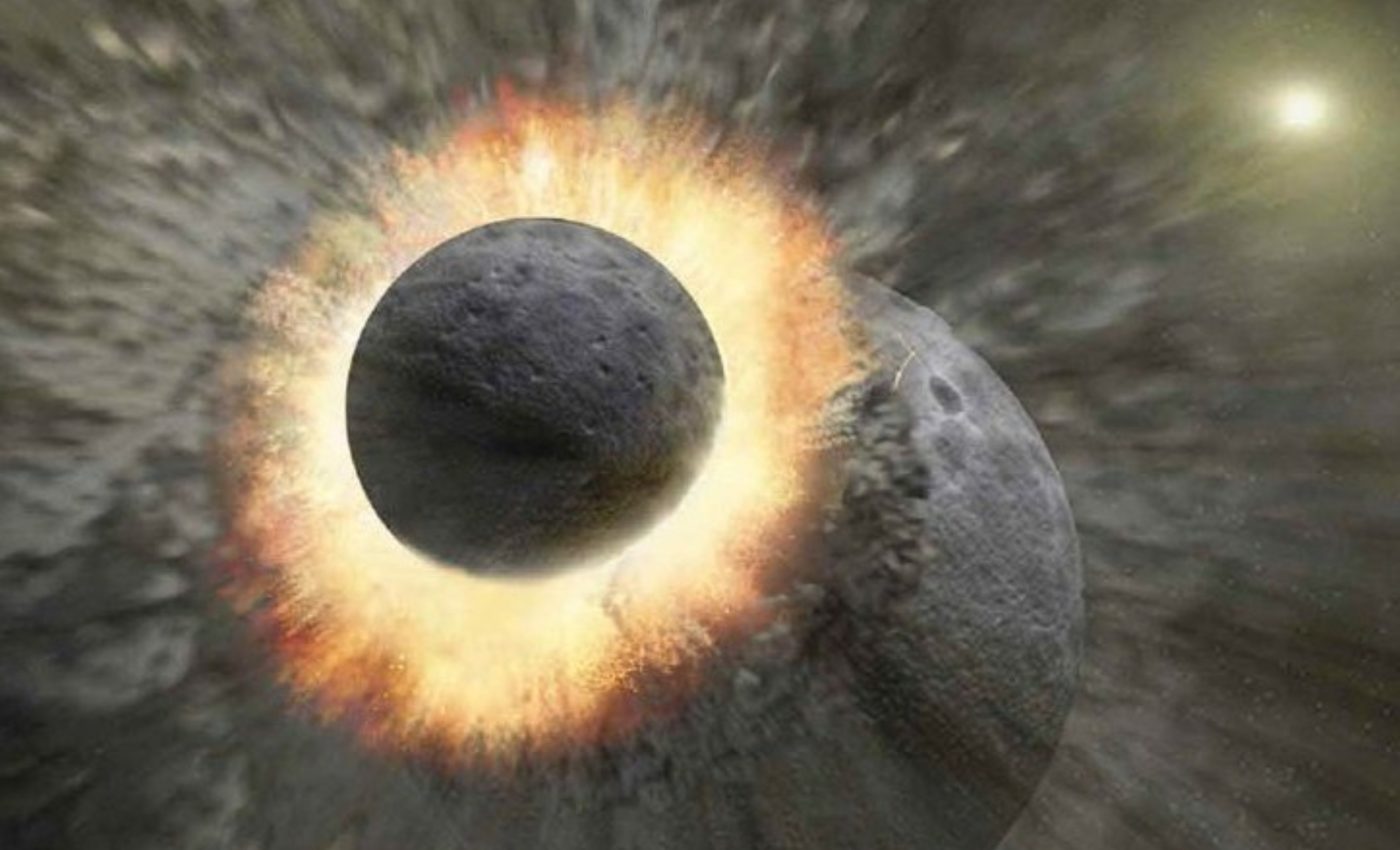
Unlocking the origin story of Theia - the planet that made the Moon
About 4.5 billion years ago, a world the size of Mars crashed into Earth and scattered debris that became the Moon.
New measurements of subtle chemical fingerprints in ancient rocks now tie that lost world, known as Theia, to the inner Solar System where Earth formed.
A team of planetary scientists compared tiny differences in the makeup of Moon rocks, Earth rocks, and meteorites to track where Theia began.
The results point to a birthplace close to the Sun instead of the outer Solar System, changing ideas about the stages of planet growth.
A collision of worlds
The work was led by Timo Hopp, a planetary scientist at the Max Planck Institute for Solar System Research (MPS) and the University of Chicago (UOF).
Hopp’s research focuses on using isotopic fingerprints, differences in neutron counts within the same element, to rebuild the histories of young planets.
During the Solar System’s youth, many small bodies moved on crowded paths and occasionally smashed into one another.
The giant-impact hypothesis (GIH) is a model where a collision of worlds threw debris into orbit around Earth, and it is backed by research.
What isotopes can reveal
Chemists and geologists use isotopes, versions of an element with different neutron counts, as natural tracers of where and how rocks formed.
“The composition of a body archives its entire history of formation,” said Thorsten Kleine, director at the Max Planck Institute for Solar System Research.
In the early Solar System, different isotopes of the same element were not spread out evenly with distance away from the Sun.
Bodies that formed near the Sun collected one mix, while those farther out collected another, so isotope signatures carry information about their address.
Careful lab work on Apollo samples shows that Moon rocks and Earth rocks share nearly identical isotope ratios, even when measured with extreme precision.
That close match raised questions, since a giant collision might have mixed different materials, as earlier measurements of oxygen isotopes in lunar samples highlighted.
Tracking the origins of Theia
To pin down Theia’s starting point, the researchers measured iron isotopes in 15 Earth rocks and six lunar samples returned by Apollo astronauts.
Their instruments were sensitive enough to spot differences smaller than routine lab work can see, so even small contrasts between bodies would show up.
As they interpreted the data, the team took advantage of the fact that different elements trace different stages of planet building.
Iron and molybdenum tend to sink into metallic cores, while zirconium stays in mantles, so comparing them helps separate early growth from later impacts.
Possible mixtures of Earth and Theia
The team also combined earlier data on chromium, molybdenum, and zirconium in mass balance calculations that explored possible mixtures of early Earth and Theia.
Those solutions pointed to both bodies forming on relatively tight orbits, with Theia closer to the Sun, in the new study.
“Earth and Theia are likely to have been neighbors,” said Hopp. The most convincing scenario is that most of the building blocks of Earth and Theia originated in the inner Solar System.
A birthplace near the Sun
In their models, meteorites served as guides. Each planetesimal, a small early Solar System body that helped build planets, left behind fragments with an isotopic pattern.
Previous work found that meteorites fall into two broad isotopic families that trace material from the inner and outer Solar System. That broader picture comes from detailed analyses and it helped the new results place Theia in the inner group.
This split between inner and outer meteorites arose because Jupiter acted as a barrier, keeping material on both sides from mixing for long periods.
Later, some outer bodies were scattered inward, delivering water rich rocks to the region where the terrestrial planets were assembling.
One twist is that the modeled Theia could not be built from any known meteorite class, even though Earth can be described this way. That mismatch hints that Theia included material from closer to the Sun than any meteorites that have landed on Earth so far.
Why Theia’s origin matters
Placing Theia next door to Earth changes how scientists picture the final stages of rocky planet growth.
Worlds in similar orbits could have traded material more easily, blurring boundaries between what belonged to a planet and what came from its neighbors.
At the same time, the study suggests that elements in Earth’s mantle arrived on bodies like Theia instead of during the planet’s growth spurt.
The mantle is the layer of hot rock between the crust and the core, and impacts can add iron and molybdenum into it.
Refining our map of the Solar System
Similar approaches could be applied to Mars, Mercury, and asteroids, using isotope measurements and computer models to reconstruct collisions that are invisible today.
Each extra constraint brings researchers closer to a story of how a chaotic disk of dust became the ordered set of planets seen now.
The study of Theia shows that even a destroyed planet leaves traces in the chemistry of the worlds it helped build.
The next step will be to sample more meteorites and new lunar rocks, refining the isotopic map of the Solar System.
The study is published in the journal Science.
Image credit: NASA/JPL-CalTech/T. Pyle
—–
Like what you read? Subscribe to our newsletter for engaging articles, exclusive content, and the latest updates.
Check us out on EarthSnap, a free app brought to you by Eric Ralls and Earth.com.
—–













